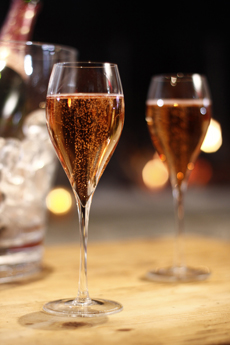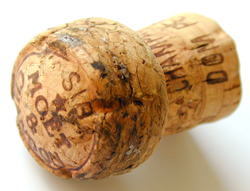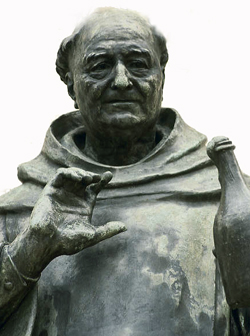 One of life’s great experiences: rosé Champagne. Photo courtesy Champagne Bureau US. One of life’s great experiences: rosé Champagne. Photo courtesy Champagne Bureau US.
|
R. VERONIQUE FITZGERALD is wine consultant and writer in New York City.
|
December 2007
Last Updated December 2019
|
 |
Product Reviews / Main Nibbles / Wine
Champagne & Sparkling Wine
Go For The Bubbly ~ But Go With Knowledge
Page 1: Introduction
CAPSULE REPORT: If you’re planning to purchase some sparkling wine for the holidays or New Year’s Eve, read this before shopping. This is Page 1 of a five-page article. Click on the black links below to visit other pages.
Introduction To Champagne & Sparkling Wine
Traditionally, Champagne is the preferred sparkling wine for celebration. While they can vary in style and be delicious, don’t limit yourself to the world’s most famous bubbly. There is a host of alternatives from all over the wine world that can grace your parties and fill your glasses raised in toast; and in most cases, they are a lot less expensive than Champagne.
All bubblies start out as still wine, usually known as a base wine. Various traditions specify a particular art in blending the base wine. The quality of that wine is all-important, because once the wine is made to sparkle, its characteristics (good or bad) are amplified. While they all involve trapping carbon dioxide to be absorbed into the wine and bottling under pressure, there are several different methods to achieve the finished product.
The Traditional Method Of Making Champagne
The difference between sparkling wine and still wine involves a second fermentation that takes place inside the very bottle you purchase. Once  bottled, the base wine is inoculated with a mixture of sugar and additional yeast and sealed with the crown cap used for beer bottles. Just as in the first fermentation, the yeast eats the sugar and creates alcohol and CO2 as byproducts. In the process, the alcohol level is boosted another 1% or so, and unlike in the first fermentation, the CO2 is trapped and allowed to dissolve into the wine. bottled, the base wine is inoculated with a mixture of sugar and additional yeast and sealed with the crown cap used for beer bottles. Just as in the first fermentation, the yeast eats the sugar and creates alcohol and CO2 as byproducts. In the process, the alcohol level is boosted another 1% or so, and unlike in the first fermentation, the CO2 is trapped and allowed to dissolve into the wine.
Photo courtesy of freeimages.co.uk.
A period of bottle aging follows, during which time the dead yeast cells, known as lees, contribute another layer of flavor. Bottle aging can last anywhere from 9 to 15 months to as long as 5 to 10 years. The lees are subsequently removed in a process called disgorgement, the Champagne is topped up with a mixture of wine and sugar syrup known as dosage and the familiar mushroom-shaped cork is inserted with a wire cage to hold it down. This entire process of making Champagne (and other, but not all, sparkling wines) is known as the Traditional Method, the Champagne Method, Méthode Traditionnelle and Méthode Champenoise.
While other regions of the world can use the same process. Champagne is known for its toasty, yeasty flavors, achieved because of its unique terroir—the limestone strata underneath the topsoil of the region. Caveat emptor: Champagne is a product of an eponymous region in France. In the European Union, it is illegal for any sparkling wine made anywhere else to have the word Champagne on its label, even bubblies from other parts of France. But this law doesn’t apply outside Europe; so do read labels carefully when buying Champagne
The Dom Pérignon Myth
The popular myth that the monk Dom Pierre Pérignon, cellermaster and master blender at the Hautvillers abbey, created sparkling wine in the Champagne region by accident (picture exploding wine bottles in a well-stocked cellar), is just that. A  hundred years after his death, marketing people created the story, with the good father taking his first sip and crying out to his fellow monks, “Come quickly! I am drinking the stars.” According to Tilar Mazzeo, author of The Widow Clicquot, The Story of a Champagne Empire and the Woman Who Ruled It, Dom Pérignon worked to prevent wine from developing bubbles; the French did not like any sparkle in their wines. hundred years after his death, marketing people created the story, with the good father taking his first sip and crying out to his fellow monks, “Come quickly! I am drinking the stars.” According to Tilar Mazzeo, author of The Widow Clicquot, The Story of a Champagne Empire and the Woman Who Ruled It, Dom Pérignon worked to prevent wine from developing bubbles; the French did not like any sparkle in their wines.
Photo: A life-size statue of the alleged “discoverer” of Champagne, Dom Pérignon, stands at the at House of Moët et Chandon in Epernay, Champagne, France. In reality, Dom Pérignon was anti-bubbles!
And, sacre bleu!, sparkling wine did not even originate in France. In 1660 or so, while Dom Pérignon was trying to stamp out bubbles, wealthy Brits were already drinking sparkling wine made from Champagne grapes. To preserve the still wine they bought by the barrel, some bottled it with a bit of brandy as a preservative. The sugar in the brandy engendered a secondary fermentation that created the bubbles. But those first sparkling wines, Mazzeo notes, were not the elegant, dry Champagnes of today. They were 10 or 15 times as sweet as a modern demi sec, cloudy with huge bubbles that created a beer-like foam. It was the Veuve (widow) Cliquot who devoted herself to creating elegant bubbles and a clear beverage. Without her (or someone else to do what she did), Champagne would not enjoy its world-famous status. So, credit for the dry Champagne we love does go to France—just not to Dom Pérignon.
Here’s more about it.
Nonetheless, Dom Pérignon did devote his life to improving the quality of the region’s still wines, introducing vineyard and winery practices still in use worldwide today. The widow (or in French, Veuve) Clicquot Ponsardin perfected the Champagne method by creating the process called remuage, which makes it possible to remove the dead yeast from the bottles without losing a lot of wine in the process.
Continue To Page 2: How To Buy Champagne
Go To The Article Index Above
Lifestyle Direct, Inc. All rights reserved. Images are the copyright of their respective owners.

|




 One of life’s great experiences: rosé Champagne. Photo courtesy Champagne Bureau US.
One of life’s great experiences: rosé Champagne. Photo courtesy Champagne Bureau US.  bottled, the base wine is inoculated with a mixture of sugar and additional yeast and sealed with the crown cap used for beer bottles. Just as in the first fermentation, the yeast eats the sugar and creates alcohol and CO2 as byproducts. In the process, the alcohol level is boosted another 1% or so, and unlike in the first fermentation, the CO2 is trapped and allowed to dissolve into the wine.
bottled, the base wine is inoculated with a mixture of sugar and additional yeast and sealed with the crown cap used for beer bottles. Just as in the first fermentation, the yeast eats the sugar and creates alcohol and CO2 as byproducts. In the process, the alcohol level is boosted another 1% or so, and unlike in the first fermentation, the CO2 is trapped and allowed to dissolve into the wine.  hundred years after his death, marketing people created the story, with the good father taking his first sip and crying out to his fellow monks, “Come quickly! I am drinking the stars.” According to Tilar Mazzeo, author of T
hundred years after his death, marketing people created the story, with the good father taking his first sip and crying out to his fellow monks, “Come quickly! I am drinking the stars.” According to Tilar Mazzeo, author of T